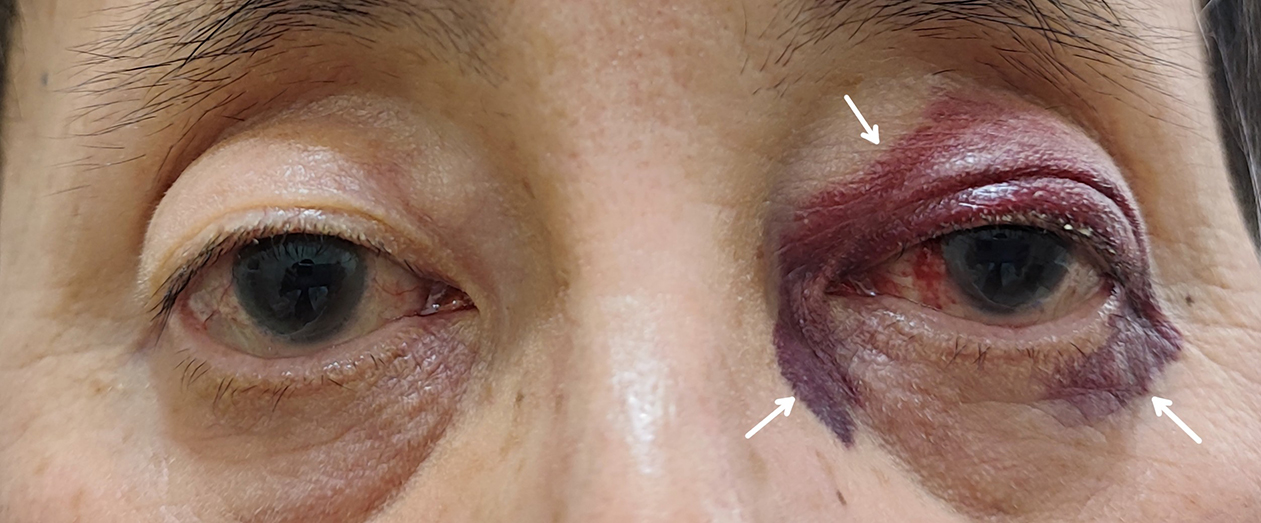Corresponding author: Yuri Furuhashi, yuri.furuhashi@gmail.com
DOI: 10.31662/jmaj.2024-0376
Received: November 25, 2024
Accepted: January 28, 2025
Advance Publication: March 28, 2025
Published: April 28, 2025
Cite this article as:
Furuhashi Y, Takanosu T, Miki M, Kikuchi H. Raccoon Eye Caused by Dialysis-related Amyloidosis. JMA J. 2025;8(2):620-621.
Key words: raccoon eyes, dialysis-related amyloidosis, emergency medicine, primary care
A 64-year-old man undergoing hemodialysis for 17 years presented with periorbital ecchymosis without a history of head trauma (Figure 1). Laboratory tests and computed tomography showed no abnormalities, such as skull bone fractures. He has experienced a knee ligament injury and a trigger finger. Immunofixation electrophoresis detected no M-protein, and κ/λ ratio was within normal limits, thus immunoglobulin light-chain amyloidosis (AL amyloidosis) is excluded. Given his clinical manifestations, we clinically diagnosed dialysis-related amyloidosis (DRA). DRA is characterized by accumulation and tissue deposition of amyloid fibrils consisting of beta2-microglobulin in the bone, periarticular structures, and viscera. While periorbital purpura, or “raccoon eyes,” may appear in AL amyloidosis because of capillary fragility (1), cutaneous involvement in DRA is rare (2). Although biopsy is the gold standard for diagnosing DRA, it is rarely performed and is typically diagnosed clinically based on symptoms and imaging studies. Non-traumatic raccoon eyes can occur in dialysis patients, but it is essential to rule out AL amyloidosis.

None
Y.F. wrote the manuscript. M.M. participated in the examination. T.T. edited the manuscript. H.K. gave clinical advice. All authors have reviewed the draft of the manuscript.
IRB approval was not required in this study.
We obtained informed consent from the patient to publish his details.
Eder L, Bitterman H. Image in clinical medicine. Amyloid purpura. N Engl J Med. 2007;356(23):2406.
Takayama K, Satoh T, Maruyama R, et al. Dialysis-related amyloidosis on the buttocks. Acta Derm Venereol. 2008;88(1):72-3.